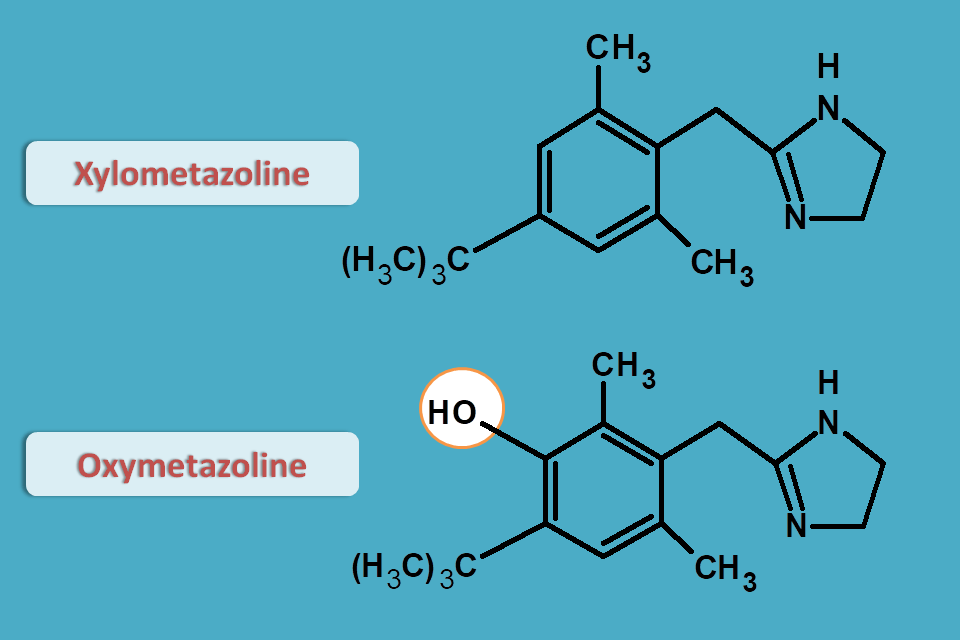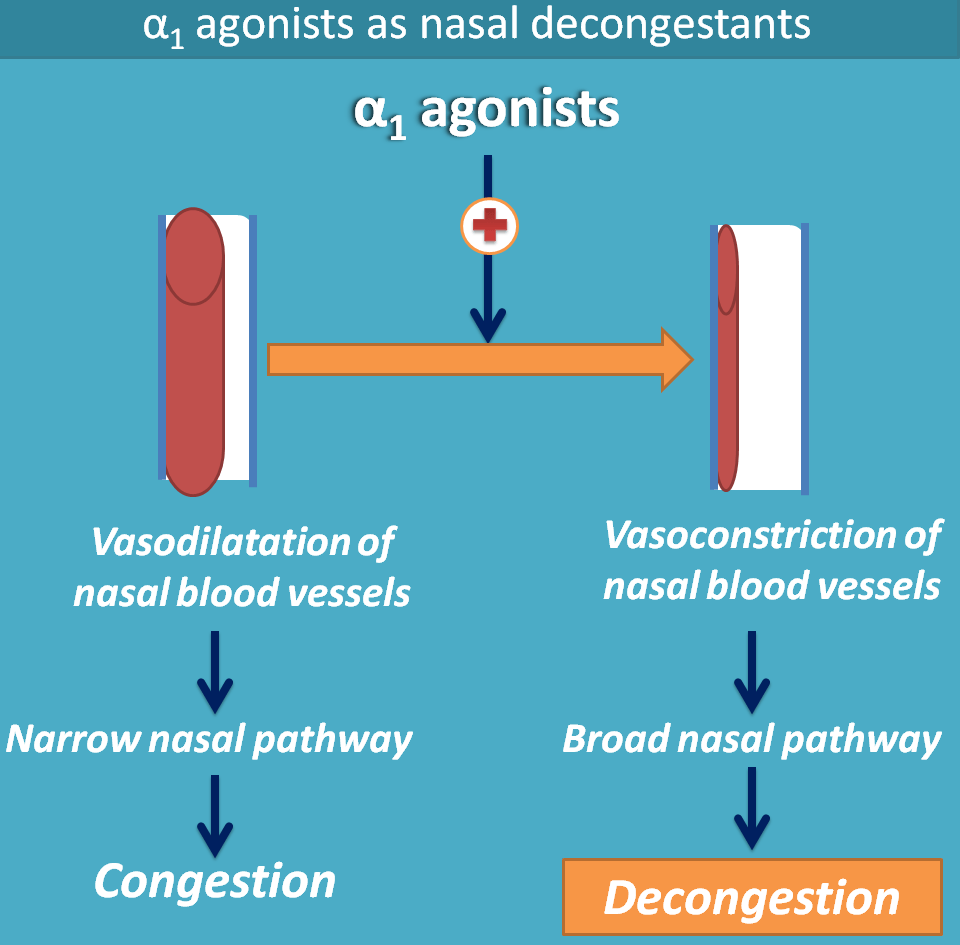Noncatechol amines
Most of the adrenergic agonists are non-catechol amines therefore show few advantages
- They are not metabolised by COMT and MAO
- They are long-acting than catechol amines
- They can be given by oral route
- They are somewhat specific to the adrenergic receptors
- They have less possible side effects
Let’s start with α1 agonists.
α1 agonists
Three drugs belong to this category
- Phenylephrine
- Oxymetazoline
- Xylometazoline
Phenylephrine is a structural modification of epinephrine lacking hydroxyl group at para position.
Both oxymetazoline and xylometazoline are imidazoline derivatives with extra hydroxyl group on the former drug.

How they act?
Oxymetazoline and xylometazoline are somewhat less selective and act mainly on α1 receptors with little action on α2 receptors. Phenylephrine is more selective for α1 receptors.
These drugs primarily act on α1 adrenergic receptors particularly on vascular smooth muscle thereby increase vasoconstriction and blood pressure.
When these drugs are systemically absorbed they increase blood pressure sensed by baroreceptor reflex leading to increased vagal activity resulting in bradycardia.
Indications
These drugs are mainly used for local purpose like
- Nasal decongestion
- To reduce redness of the eye

Congestion is a vasodilatory response where nasal air pathways are blocked due to vasodilatation of nasal blood vessels. All these three drugs are used as nasal decongestants as they produce vasoconstriction thereby increase the nasal air pathway and relive from congestion.
Oxymetazoline and xylometazoline are used as nasal spray or nasal solutions limited for topical use only. On the other hand, phenylephrine can be used for systemic purpose by oral route as tablet or syrup.
Oxymetazoline and xylometazoline can also be used locally to decrease the redness of the eye due any irritant or allergy.
Side effects
Many of the side effects are due to their systemic absorption and stimulation of sympathetic system
- Headache
- Nervousness
- Palpitations
- Anxiety
- Rise in blood pressure
- Nasal irritation
- Sneezing
Rebound congestion
These drugs can increase congestion when they are used continuously for several days. The prolonged vasoconstriction caused by these drugs may stimulate compensatory vasodilatory mechanisms increasing congestion. These drugs may also develop some tolerance adding one more possibility for this rebound effect. That's why these are not recommended to use for more than three days.
α2-agonists
Clonidine is a centrally acting selective α2-agonists. Structurally it is completely different from catechol amines with characteristic imidazoline ring in the structure.
Note: You can compare this structure with that of α1-agonists such as oxymetazoline and xylometazoline. All these drugs are imidazoline derivatives where clonidine has amine bridge and later drugs have methyl bridge.
How it acts?
Clonidine mainly acts by inhibition of central sympathetic discharge by acting as agonist on α2 receptors.
How inhibition is possible when it acts as agonist?
Yes, it's possible as it acts as agonist on α2 receptors which are autoinhibitory in nature located presynaptically within the CNS. So, when these receptors are activated they decrease cAMP resulting in reduction of calcium levels within the presynaptic nerve terminal. As calcium levels decrease calcium mediated exocytosis is inhibited preventing the release of neurotransmitter.
Side effects
Side effects can attributed to its central actions including
- Sedation
- Lethargy
- Constipation
- Xerostomia
Where it is used?
The main purpose of clonidine is to decrease the sympathetic outflow in situations of excess sympathetic stimulation. So in any disorder associated with sympathetic stimulation, clonidine can be used. The main indications of this drug are
- Centrally acting antihypertensive
- To reduce the withdrawal effect of opioids, benzodiazepines and other addictive drugs